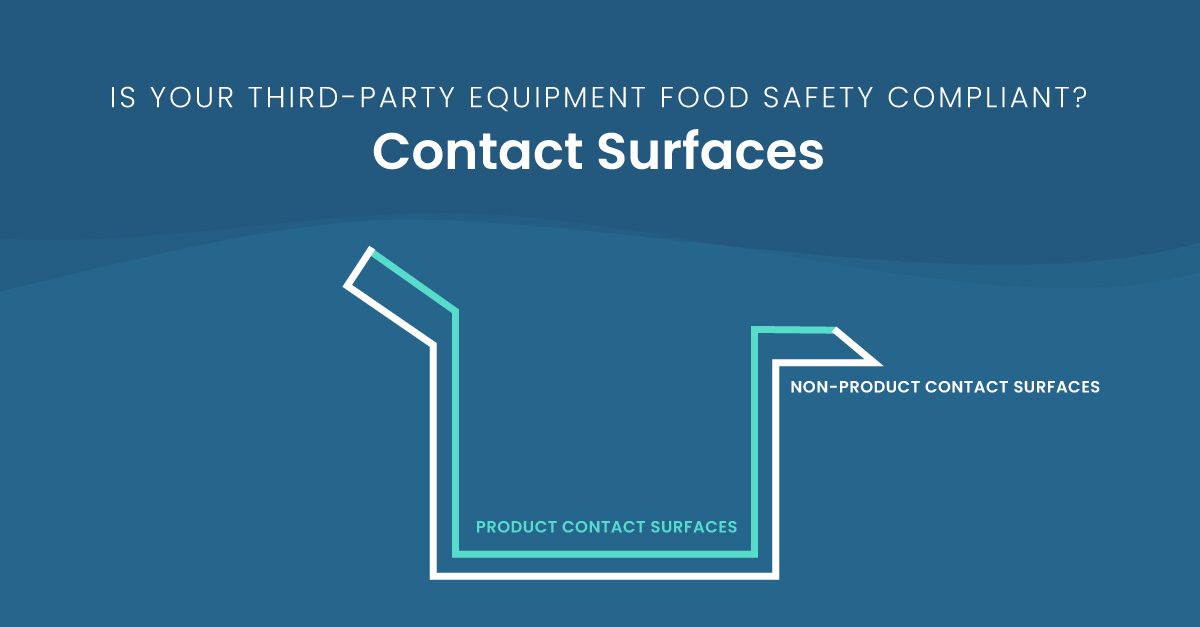
This means that the surfaces of the equipment must be designed to prevent harborage of microorganisms and contaminants, made of materials that will not react negatively with the product, and be able to withstand cleaning and sanitizing procedures.
3-A Sanitary Standards Inc., a not-for-profit organization that creates regulations for manufacturing equipment in the food and beverage industry, has defined two main types of contact surfaces. These are:
Product contact surfaces: All surfaces which are exposed to the product and surfaces from which splashed product, liquids, or material may drain, drop, diffuse, or be drawn into the product or onto product contact surfaces.
Non-Product contact surfaces: All exposed surfaces from which splashed product, liquids or other soil cannot drain, drop, diffuse or be drawn into or onto the product, product contact surfaces, open packages or the product contact surfaces of package components.
To ensure new equipment complies with food safety guidelines, meat processors should verify that all surfaces have been tested and defined as product or non-product contact surfaces. Third-party suppliers should build contact surfaces to exact specifications including position, surface materials, angle, and seams, to protect the product from bacteria growth and other contaminants. If any surface of the equipment will be exposed to the product, the third-party supplier should provide a materials analysis and cleaning procedure documentation to the processor.
Explore our primal solution for protein processors, FloVision Primal.

